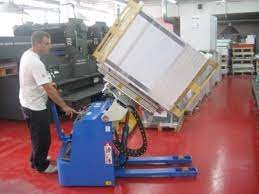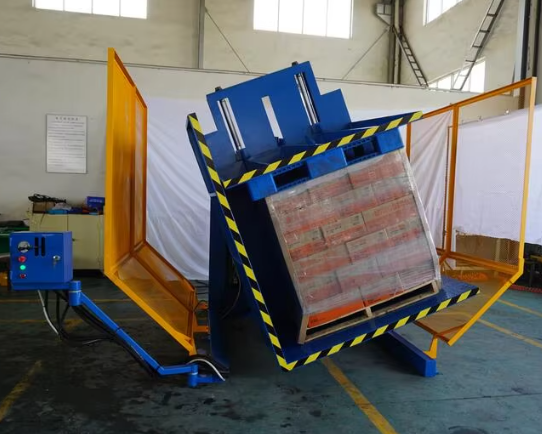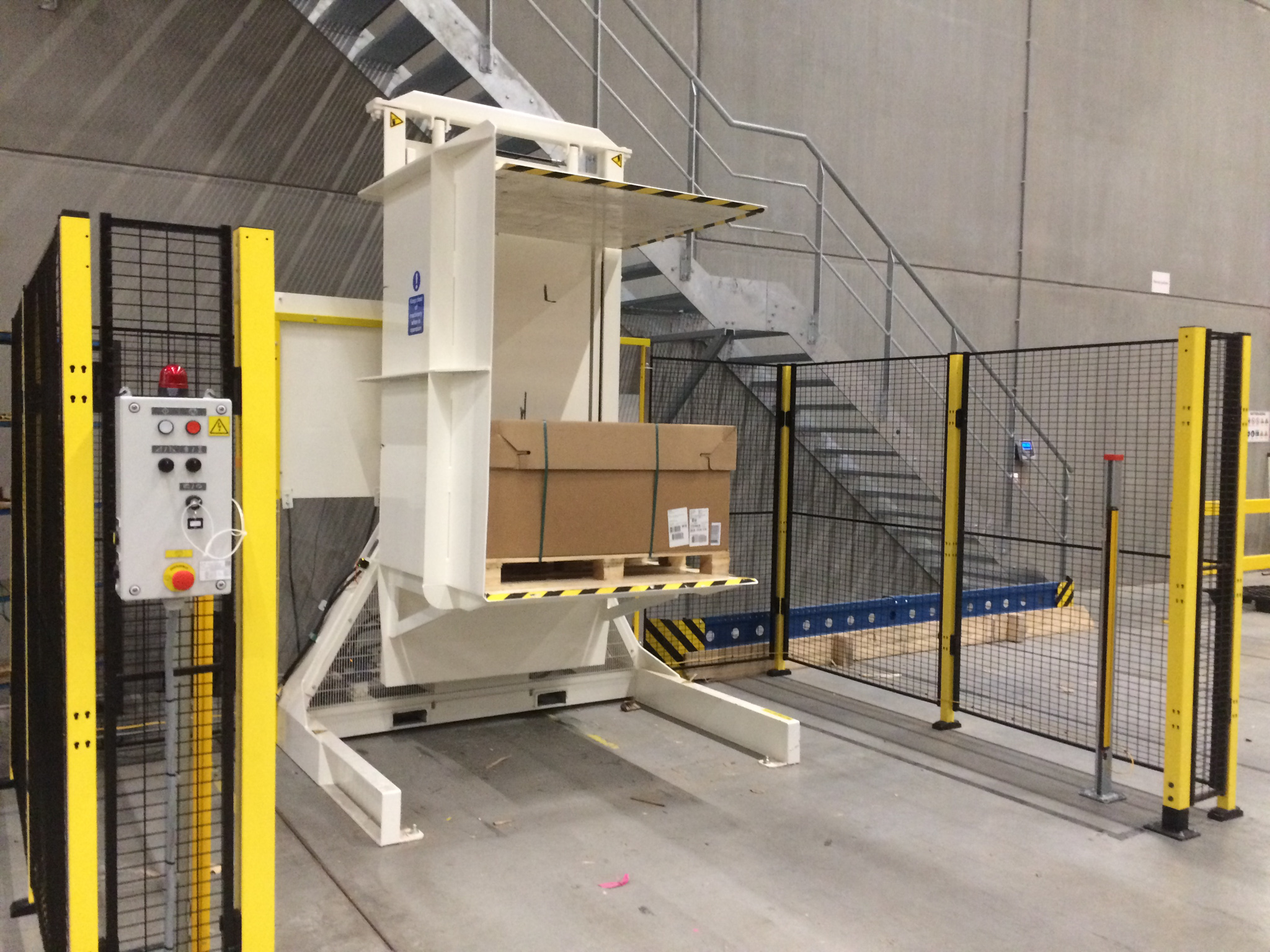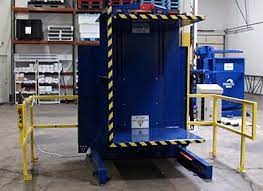Cutting Downtime in Europe: How Pallet Changing Machines Help
Are your production lines constantly being held up by slow, manual processes? In competitive markets like Europe, every second of unplanned downtime eats directly into your profits. You have high-tech manufacturing equipment running at full speed, only to be stopped by the simple, yet risky, task of manually swapping a pallet. It's a frustrating bottleneck that costs money, creates safety hazards, and slows down your entire operation. But there is a straightforward solution. Imagine replacing that manual chokepoint with a dedicated machine that does the job in under a minute, safely and reliably. This isn't just a fantasy; it's what pallet changing machines are doing for businesses right now.
Pallet changing machines help cut downtime in Europe by automating the slow, manual, and error-prone process of transferring goods between pallets. This automation minimizes production stops, reduces dependency on manual labor, prevents product damage, and ensures a continuous, predictable flow. This directly boosts operational efficiency and uptime, which is critical in high-cost operating environments.

I've seen this transformation firsthand. As an engineer and now a factory owner myself, I've dedicated my career to solving these kinds of practical problems. The principles of efficiency and reliability are universal, whether you are making steel coils or packaging consumer goods. The challenges faced by manufacturers in Europe—high costs, strict regulations, and the need for automation—are becoming global challenges. Let's explore exactly how this technology works and the tangible benefits it can bring to your factory floor. I want to share what I've learned from helping businesses solve this very issue.
How do Pallet Changers Directly Impact Operational Uptime in a European Plant?
Your production line is a complex system, and its output is only as strong as its weakest link. What happens when that weak link is a manual task? Every time you need to switch a pallet, whether it's to move goods to the warehouse, prepare them for shipping, or replace a damaged wooden pallet with a hygienic plastic one, your line has to wait.
These small stops add up to huge losses over a shift, a week, or a year. In a high-cost environment like Europe, every minute of uptime is critical. A 90% uptime rate might seem acceptable, but that other 10% could be the entire profit margin on your products. It's incredibly frustrating to watch millions of dollars of advanced machinery sit idle while operators search for a forklift and manually wrestle with a heavy load.
A pallet changer is designed to solve this specific problem. It replaces a chaotic, multi-minute manual job with a smooth, automated cycle that takes less than 60 seconds. It integrates into your line, becoming a reliable part of the process instead of a constant source of delay. It keeps your primary equipment running and producing value.
Pallet changers directly impact operational uptime by replacing manual pallet swapping with a fast, automated cycle. This reduces the time a production line is stopped from several minutes down to under one minute. This simple change drastically minimizes equipment idle time and maximizes the effective run-time of your core manufacturing machinery.

When I visit factories, I often ask managers to time their manual processes. The results are always surprising. The downtime isn't just the physical transfer time; it's a collection of smaller, hidden delays that snowball. By looking closer at these details, we can see exactly where an automated solution makes the biggest difference. It's a lesson I learned early in my career: to improve a system, you must first truly understand how it works and where it fails.
The Anatomy of Downtime in Pallet Handling
Let's break down a typical manual pallet swap. First, an operator has to stop the production line output. Then, they must find an available forklift, which might be in use elsewhere in the facility. The operator drives to the location, carefully lifts the heavy and potentially unstable load, and moves it to a clear area. A second pallet is brought in. The goods are then restacked by hand or awkwardly pushed from one pallet to another. This entire process is filled with potential delays and risks. What if the forklift is not available? What if the operator is not properly trained? What if products are dropped and damaged? Each of these "what ifs" represents more downtime and more cost.
Quantifying the Uptime Gains
An automated pallet changer standardizes this process. The machine is always ready. The cycle time is always the same. The risk of product damage is nearly zero. When we put the numbers side-by-side, the advantage becomes very clear. This isn't just about saving a few minutes; it's about making your entire production forecast more reliable and predictable. For one of my clients in the German food industry, this predictability was just as important as the speed. They could promise delivery times with confidence because a major variable—manual handling time—was removed from the equation.
| Metric | Manual Pallet Change | Automated Pallet Changer | Impact |
|---|---|---|---|
| Time per Cycle | 5-10 minutes | < 1 minute | 80-90% time reduction per cycle |
| Labor Required | 1-2 operators + forklift | 1 operator (supervisory) | Frees up labor for higher-value tasks |
| Risk of Product Damage | Medium to High | Very Low | Improves quality, reduces material waste |
| Process Consistency | Variable, depends on operator | Highly Consistent | Enables predictable production scheduling |
What is the Real ROI of a Pallet Changer When Factoring in Labor and Safety?
When you look at the price of a new machine, it is easy to see it only as a cost. I understand this perspective completely. As a factory owner, every investment I make has to be justified. It is natural to think, "My team can handle this manually. We have always done it this way, and it works."
But the true cost of the "manual way" is often hidden. You are not just paying for the time your operators spend moving pallets. You are paying for their attention to be diverted from more critical, value-adding tasks. You are paying for the risk of workplace injuries, especially back injuries, which are common with heavy lifting. You are paying for the products that get damaged or contaminated during a clumsy transfer. These are real, recurring costs that eat away at your profit margin every single day.
A pallet changer is not just another piece of equipment; it is an investment with a measurable return. It is designed to attack these hidden operational costs. By calculating the true return on investment (ROI), you can see how the machine pays for itself through savings in labor, safety, and product protection.
The real ROI of a pallet changer comes from a combination of direct and indirect savings. It drastically reduces manual labor costs, virtually eliminates product damage during transfers, and lowers insurance premiums and injury-related expenses by creating a safer work environment. These combined savings often result in a full payback period of 12 to 24 months.

I remember talking with a client in Spain who ran a large distribution center. He was skeptical about the upfront cost. I sat down with him and we mapped out his real costs on a whiteboard. We calculated everything: labor hours, average product damage per month, and even one recent worker compensation claim. When he saw the total annual cost of his "free" manual process, the decision became simple. The investment was no longer a cost; it was a solution to a problem that was costing him more than the machine itself.
Calculating Direct Cost Savings
The easiest place to start is with the direct, tangible savings. These are the numbers you can pull directly from your accounting and operational records. First, calculate your labor savings. Take the hourly wage of an operator, add benefits and overhead, and multiply it by the number of hours spent each day just on changing pallets. You will be surprised how quickly this adds up. Second, track your product damage. How many units are lost each month due to being dropped, crushed, or contaminated during manual transfers? This is a direct loss of revenue. A pallet changer protects your products, turning that loss into savings.
Valuing Indirect Benefits
The indirect benefits are just as important, even if they are harder to put a precise number on. The most significant is safety. Creating a safer workplace reduces the risk of costly accidents and can lead to lower insurance premiums. In markets like Europe, where safety regulations are extremely strict, compliance is not optional. A safer environment also improves employee morale and reduces turnover. Furthermore, there's the benefit of increased throughput. As we discussed, less downtime means more products are made and shipped. This directly impacts your top-line revenue, making the ROI of a pallet changer even more powerful.
| Cost Category | Manual Method (Annual Est.) | With Pallet Changer (Annual Est.) | Annual Savings |
|---|---|---|---|
| Labor Costs | €50,000 | €5,000 (Supervision) | €45,000 |
| Product Damage | €15,000 | < €1,000 | €14,000 |
| Injury/Insurance Costs | Variable (Avg. €5,000) | €0 | €5,000 |
| Total Tangible Savings | - | - | €64,000 |
This simple table shows how an initial investment can be quickly recovered. For a business leader focused on financial stability and growth, this kind of analysis is crucial. It changes the conversation from "Can we afford this?" to "How soon can we implement this?"
Can Pallet Changers Integrate with Existing Automated Systems like MES and IoT?
You are building a smart factory. You have invested in a Manufacturing Execution System (MES) to track every step of production. You may have Automated Guided Vehicles (AGVs) moving materials efficiently around your plant. The last thing you want is to introduce a new machine that acts as an "island of automation"—a piece of equipment that works well on its own but cannot communicate with the rest of your intelligent systems.
A disconnected machine is a blind spot in your operations. It breaks the flow of data that is essential for modern manufacturing. You cannot monitor its performance in real-time from your central control room. You cannot schedule maintenance based on actual usage data. You cannot include it in a fully automated sequence where an AGV drops off a pallet and the changer begins its cycle automatically. A disconnected machine fundamentally undermines your entire digital transformation strategy.
I have been an engineer for a long time, and I know that modern equipment must be built for connectivity. Our pallet changers are not just strong mechanical devices; they are intelligent machines. They are designed from the start to be good communicators, ready to integrate seamlessly and become a valuable data-producing node in your Industry 4.0 ecosystem.
Yes, modern pallet changers can fully integrate with existing automated systems. They are equipped with standard PLCs and modern communication protocols, like Profinet or EtherNet/IP, that allow them to connect directly with Manufacturing Execution Systems (MES), ERPs, and IoT platforms. This enables real-time data exchange, remote monitoring, and inclusion in larger, hands-free automated workflows.

A few years ago, we worked on a project for a large logistics company in the Netherlands. Their goal was a "lights-out" warehouse, a facility that could run almost entirely on its own. Our pallet changer had to communicate perfectly with their warehouse management system and their fleet of AGVs. It was a challenge, but by working as a strategic partner, not just a supplier, we made it happen. The system we delivered receives commands, executes its task, and reports back its status without any human intervention. This is the future of manufacturing, and our machines are ready for it.
The Communication Bridge: PLC and Protocols
At the heart of every modern machine is a Programmable Logic Controller (PLC). We build our machines using industry-standard PLCs from brands like Siemens and Allen-Bradley. This is important because it means your own engineering team is likely already familiar with the hardware and software. There is no need to learn a new proprietary system. We then enable communication over standard industrial protocols. These protocols act as a common language, allowing our pallet changer to talk to your other systems. This focus on open standards makes integration faster, easier, and more reliable.
What Integration Looks Like in Practice
Once connected, the pallet changer becomes a source of valuable data and a controllable part of your automated factory.
- MES Integration: The changer can send its status (e.g., idle, running, fault), cycle counts, and operational alarms directly to your MES. Your central system knows exactly what the machine is doing. In return, the MES can send a work order to the changer, telling it to begin a cycle when a product arrives.
- IoT & Predictive Maintenance: We can equip the machine with extra sensors to monitor things like motor vibration, hydraulic pressure, and temperature. This data can be streamed to your IoT platform. By analyzing trends, your system can predict a potential failure before it happens. This allows you to schedule maintenance proactively, preventing the unplanned downtime you are working so hard to eliminate.
| System | Integration Method | Benefit for Your Factory |
|---|---|---|
| MES | PLC Communication (Profinet/IP) | Real-time visibility of the entire production line; automated work orders. |
| AGV/Conveyor System | I/O Signals / Bus Communication | Creates a fully automated, hands-free material flow from production to warehouse. |
| IoT Platform | Onboard Sensors + Data Gateway | Enables predictive maintenance; allows remote diagnostics from anywhere. |
| ERP System | Via MES or Middleware | Ensures accurate inventory tracking (e.g., goods moved to shipping pallets). |
How Do Modern Pallet Changers Address Europe's Strict Environmental and Safety Standards?
Operating in a market like Europe means dealing with some of the strictest regulations in the world. You have the CE marking process to guarantee machine safety. You have regulations like REACH that control the materials used in construction. And there is constant pressure from governments and customers to improve energy efficiency and reduce your environmental impact. Buying a new piece of equipment that fails to meet these standards is simply not an option.
A non-compliant machine is a major business risk. It can lead to heavy fines, government-mandated shutdowns, and serious damage to your company's reputation. As a business owner, I know that navigating these complex rules can be a significant burden. You need to be able to trust that your equipment partners understand these requirements and have already done the hard work for you.
This is a responsibility I take very seriously. We design and build our machines with the European market as a benchmark. Our pallet changers are engineered from the ground up to meet and often exceed these strict standards. This focus on compliance provides you with peace of mind and ensures your investment is future-proof, ready for the regulations of today and tomorrow.
Modern pallet changers address strict European standards by incorporating comprehensive safety features like light curtains, safety fencing, and certified emergency stop systems to achieve full CE compliance. From an environmental standpoint, they are designed for high energy efficiency with optimized hydraulic or electric systems, and they help reduce waste by preventing damage to both products and pallets.

Building machines is more than just assembling steel parts. It's about taking responsibility for the people who will operate them and the environment we all share. When I started my journey as an engineer on the factory floor, I saw firsthand the importance of safe, reliable equipment. Now, as the owner of SHJLPACK, that commitment to quality and responsibility is at the core of everything we do. We build machines that we would be proud to use in our own factory.
Engineering for People: The Safety Aspect (CE Marking)
CE marking is not just a sticker; it is a declaration that a machine is safe to operate. To achieve this, we engineer multiple layers of safety into our pallet changers. This starts with robust physical guarding and safety fencing to prevent anyone from entering the operational area while the machine is moving. We use light curtains that immediately stop the machine if a person or object breaks the beam. All controls are designed to be intuitive and fail-safe, including two-hand controls for certain operations and clearly marked emergency stop buttons that are easily accessible. This is not just about meeting a legal requirement; it is about protecting your most valuable asset: your people.
Engineering for the Planet: The Environmental Aspect
A modern machine must also be an efficient machine. This aligns with both environmental goals and your goal of reducing operational costs. We offer both hydraulic and electric models, each optimized for energy efficiency. Our hydraulic systems use on-demand pumps that only consume significant power when the machine is in motion. Our all-electric models provide precise control with minimal standby energy consumption. Beyond energy use, our pallet changers contribute to your environmental goals by reducing waste. Gentle handling means fewer damaged products are thrown away. It also means fewer wooden pallets are broken and sent to a landfill. This direct reduction in industrial waste is a simple but powerful benefit.
| Standard/Regulation | How Our Pallet Changers Comply | Benefit for the Owner |
|---|---|---|
| Machinery Directive (CE) | Physical guards, light curtains, certified components. | Guarantees operational safety for your team and avoids legal issues. |
| Low Voltage Directive | Insulated wiring, proper grounding, circuit protection. | Ensures electrical safety and long-term reliability. |
| Energy Efficiency Goals | On-demand power systems, efficient motors. | Lowers electricity bills and reduces your factory's carbon footprint. |
| Waste Reduction Policies | Gentle product handling, minimizes pallet breakage. | Less material sent to landfill, lowering disposal costs and improving sustainability. |
Conclusion
In short, pallet changers are a key investment for modern factories. They cut downtime, improve safety, and integrate into smart systems, directly boosting your operational efficiency and bottom line.


